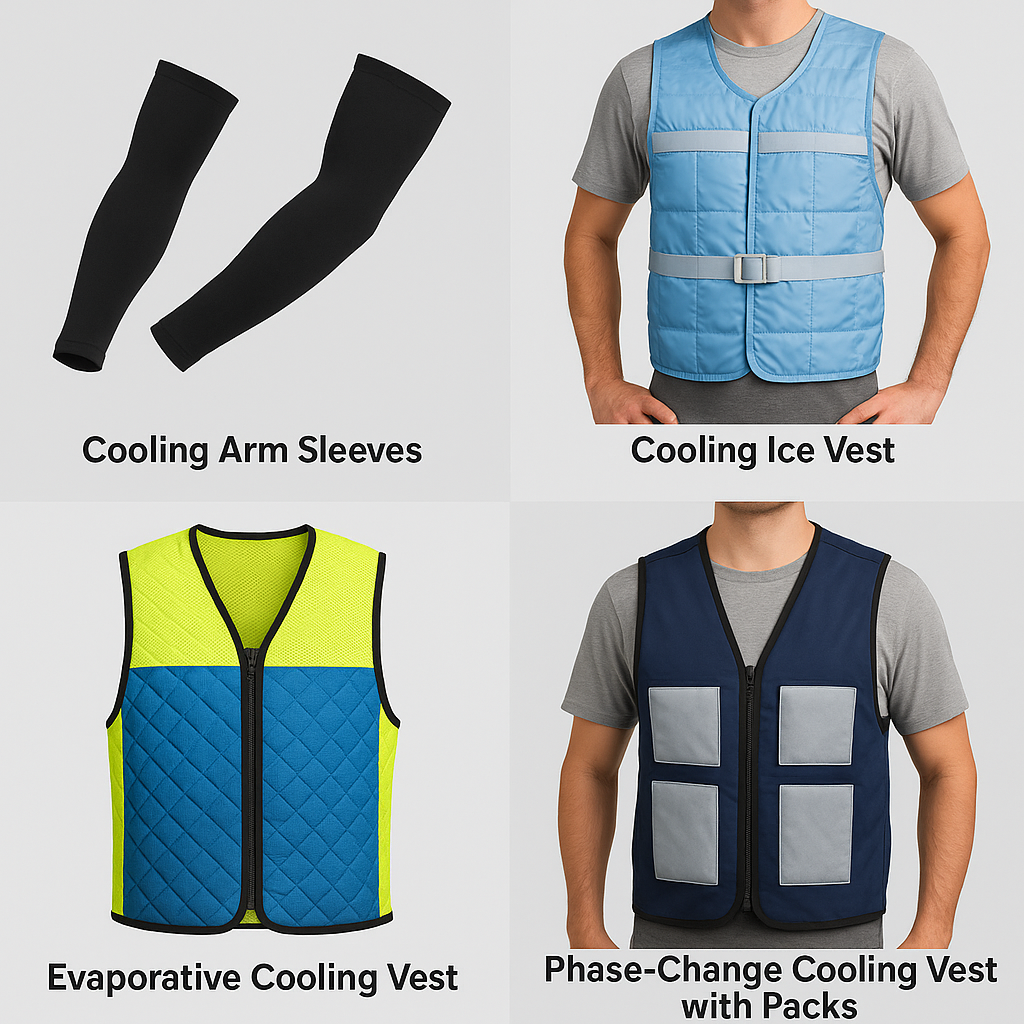
As global temperatures soar and heatwaves become more frequent, protecting outdoor workers from heat stress is no longer optional. It has become a critical responsibility for employers across industries. From construction sites and oil fields to agriculture and logistics, millions of workers face rising risks of heat-related illnesses every single day.
But what if a simple and affordable solution could make a difference? A new study from the University of Connecticut suggests that cooling garments—such as ice-water-soaked neck gaiters, sleeves, and hats—can significantly lower workers’ core body temperatures during long shifts in the sun.
This breakthrough has the potential to revolutionize workplace heat safety. Here’s why it matters, how it works, and what employers can do right now to keep their teams safe and productive.
🌡️ Why Heat Stress Is a Growing Threat
Extreme heat is no longer a seasonal concern. It has become a global health and safety issue that demands immediate attention. In 2025 alone, over 50 countries recorded heatwaves surpassing historical averages, pushing temperatures to dangerous levels. Outdoor workers are among the most vulnerable in this crisis. They face direct sun exposure, heavy physical workloads, and often limited access to cooling environments or hydration stations.
Heat-related illnesses such as heat exhaustion, heat stroke, and severe dehydration are on the rise. According to OSHA, thousands of workers suffer from heat-related illnesses each year, and many more cases go unreported. The consequences are not limited to health alone. Businesses are also feeling the impact with increased absenteeism, reduced productivity, and legal liabilities arising from inadequate heat protection measures.
🧊 Cooling Garments: A Simple Yet Powerful Solution
Cooling garments are designed to help the body regulate its temperature by providing targeted or full-body cooling. These garments range from neck gaiters and bandanas that cool blood flow to the brain, to arm sleeves and vests that draw heat away from the body’s core. Some are made from moisture-retaining, evaporative fabrics while others incorporate phase change materials or built-in ice packs for prolonged cooling effects.
When soaked in ice water or activated with simple hydration, these garments use evaporative cooling to help pull heat away from the skin. The result is a noticeable reduction in the body’s core temperature, helping workers stay comfortable and alert even during extreme heat.
📊 What the Study Revealed
The University of Connecticut study tracked outdoor utility workers wearing cooling garments during an eight-hour shift under intense heat conditions. The findings were promising. Workers using ice-water-soaked cooling garments maintained core temperatures approximately one degree Fahrenheit lower than those who did not.
This small but significant drop in core temperature reduced the amount of time workers spent above dangerous thresholds for heat stress. Participants also reported feeling more comfortable and less fatigued, which translated into improved productivity and fewer signs of heat-related discomfort.
🚨 The Risks of Inaction
Failing to address heat safety can have devastating consequences. Heat exhaustion presents symptoms such as headache, nausea, dizziness, and heavy sweating. Left unchecked, this can escalate to heat stroke, a life-threatening emergency where the body’s cooling mechanisms fail entirely.
Beyond the human toll, businesses also face a drop in productivity. Studies have linked heat exposure to a 20 to 30 percent decline in work performance. Legal and financial risks are equally pressing. In many countries, failing to protect workers from extreme heat can result in fines, penalties, and reputational damage.
✅ Building a Heat-Safe Workplace
While cooling garments show great potential, they work best when integrated into a holistic heat safety program. Employers should start by conducting a thorough heat risk assessment to identify high-risk tasks, locations, and schedules. Monitoring environmental conditions, such as Wet Bulb Globe Temperature readings, provides critical insights for decision-making.
Providing workers with cooling personal protective equipment is a vital step. Employers must also ensure proper training on the use and care of these garments to maximize their effectiveness. Administrative controls like rescheduling heavy tasks during cooler hours, rotating workers between high and low-exertion tasks, and enforcing regular rest breaks can make a huge difference.
Hydration solutions are equally critical. Employers should provide easily accessible drinking water and encourage workers to use electrolyte replacement drinks during extended shifts. Creating cool-down areas, such as shaded rest zones or air-conditioned trailers, can further reduce the risk of heat-related illnesses.
💡 A Proactive Approach to Heat Safety
Cooling garments offer a practical, cost-effective layer of protection, but they should not be viewed as a standalone solution. Organizations need to foster a proactive heat safety culture where workers are trained to recognize early signs of heat stress and feel empowered to report symptoms without fear of reprisal. Developing and communicating a comprehensive Heat Illness Prevention Plan can help organizations stay ahead of this growing risk.
📣 Final Thoughts
Heat safety is no longer just a summer issue. In a warming world, it is a year-round priority. Cooling garments have emerged as a promising tool to help outdoor workers manage extreme temperatures, but their success depends on how well they are integrated into broader heat management strategies.
A cool worker is a safe, productive worker. Organizations that act now will not only protect their teams but also enhance productivity and demonstrate a commitment to employee wellbeing. Don’t wait for a heat-related incident to take action.
📨 Let’s Help You Protect Your Team
At Rinath HSE Hub, we specialize in designing Heat Illness Prevention Programs tailored to your operations. From selecting the right cooling PPE to developing robust policies and training, we can help you build a safer, healthier workplace.
📧 Contact us today at info@rinathhsehub.com to get started.
 Ruto Sham
Ruto Sham